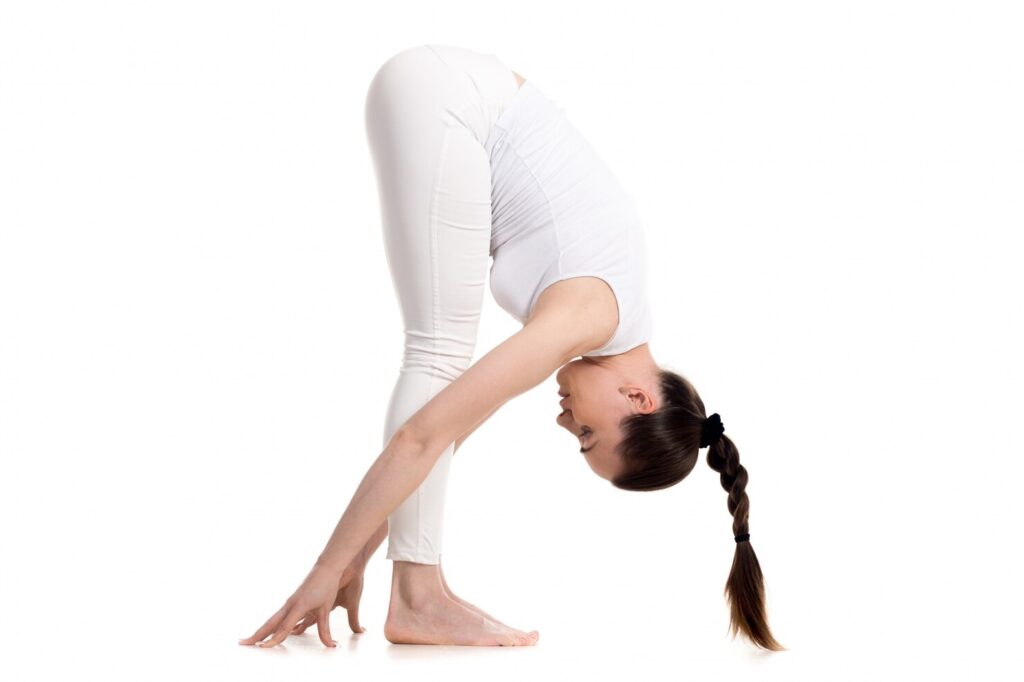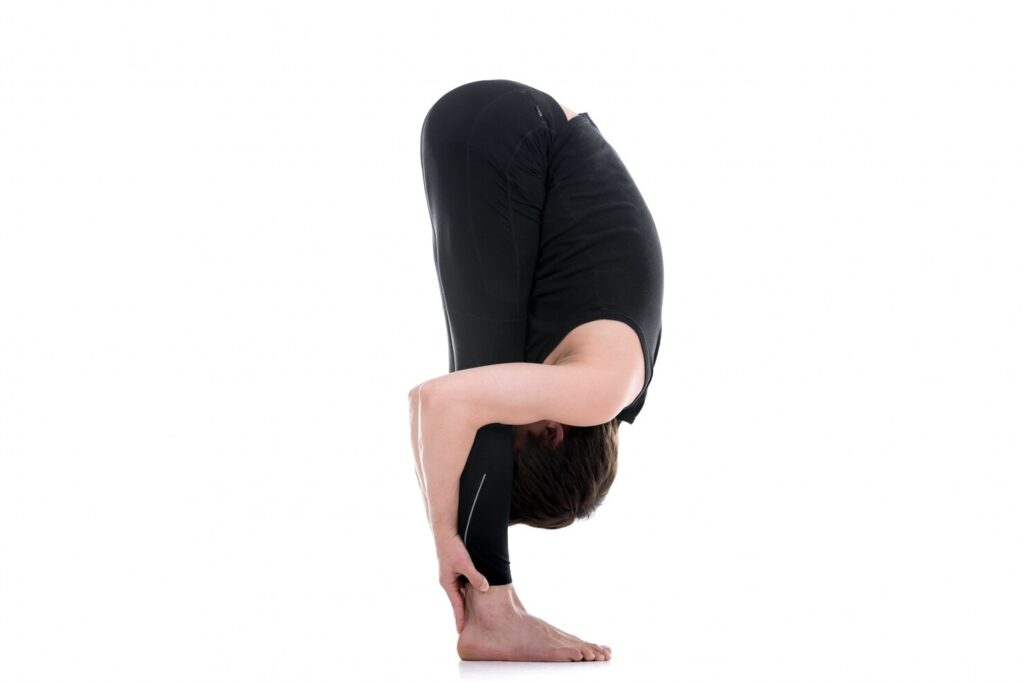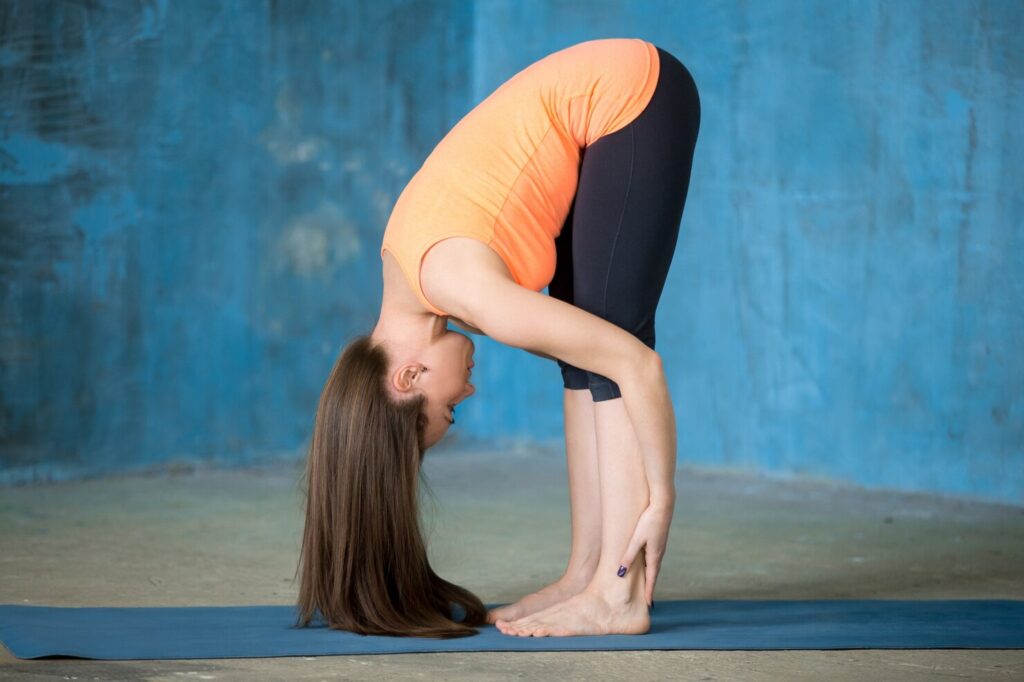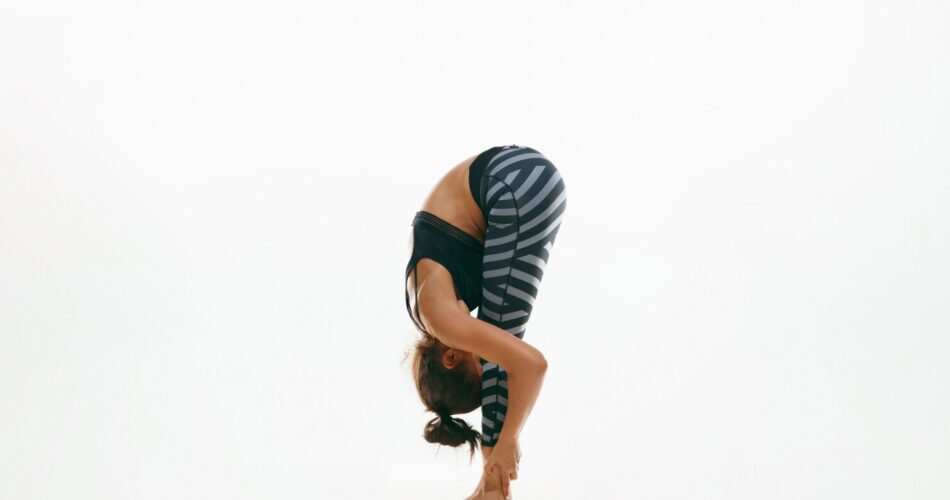In Hatha yoga, there is an asana called ‘Crane Pose’ or Padahastasana. If you are new to yoga or simply haven’t practiced in a while, this asana is great for you.
By the way, some people believe that pregnant women should not practice this asana, but that’s not entirely true. The contraindications for performing this asana include: spinal injuries, muscle strains, high blood pressure, and chronic diseases in the acute phase.
Next, we will explain how to modify this exercise even for late pregnancy.
That’s because the asana can be performed in both simple and complex versions.

Let’s Start with the Simple Version
- Stand on the mat with your feet shoulder-width apart, tighten your glutes, straighten your back.
- Inhale, begin to exhale.
- As you exhale, begin to slowly bend your torso forward.
! At this moment, focus on your body: only the hip joints bend; the legs and, most importantly, the back remain straight.
- Once your torso reaches waist level, begin to gradually bend your back. Try to press your belly to your thighs. If you do not yet have the necessary flexibility, slightly bend your knees to ensure your belly is pressing against your thighs.
- Wrap your palms around your heels, then place your palms on the floor so the heel is between the thumb and index finger.
! If you are unable to grasp your heels, try to grab your big toes with your hands. At the initial stages, the key is to form the correct technique, and flexibility will come after a few sessions.
- Arch your back, stretch your neck so you can look forward. Note that the arch should start from the tailbone, not from the chest area or the shoulders.
- Exhale again, extend your back – the bend should be deeper.
- Tuck your chin to your chest, try to bring your shoulder blades together as much as possible, and press your torso to your legs. You should already feel a stretch in your legs and back, but if you feel strong tension in your lower back, you should ease the load.
- If possible, extend your elbows to the sides. Now your pose will resemble a stork – that’s why the asana has this name.
- Stay in the asana for a while, then slowly return to the starting position.

This is a simple version of the asana that beginners can do after a few sessions.
The advanced version of Padahastasana is a continuation of the simple one and is done from the following position: the torso is bent forward, feet shoulder-width apart or even wider, arms follow along the body. Only now, you do not touch your knees with your head, but try to move your torso and shoulders behind the knees. If you succeed, grasp your thighs with your hands. Surely, you will feel stretching in your back, as the back and the back surface of the thighs are maximally stretched in this asana.

The Crane Pose, besides developing flexibility and balance, helps to relax and relieve stress – it even helps those who suffer from insomnia or migraines, and also aids in liver and spleen disorders.
Be sure to remember that Padahastasana should be performed in a stable position. The feet should stand securely, supporting the entire body. In our video lessons, you can see how to perform this asana correctly with maximum effectiveness and safety for pregnant women.



Download the app and get 7 days free use
 eng
eng rus
rus deu
deu spa
spa fra
fra ita
ita por
por srp
srp tur
tur ukr
ukr por
por bos
bos



